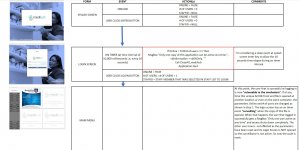medihub_guy
Member
- Local time
- Today, 05:15
- Joined
- Aug 12, 2023
- Messages
- 66
Good day everyone,
I was thinking of ways to license my front end. Yes I know there are third party solutions, but I think what I did works just as fine.
So here's the deal:
1. I have 2 forms that remain open but hidden whilst access is open (i.e. Splash Screen and my Login Screen)
2. I then have a table in my SQL server that marks if a work station is online.
3. When the database application is opened, the splash screen trigger the onload event that marks the workstation attached to that front end as "OFFLINE" or Online = false.
4. The login screen that is open has a timer interval of 1000 milliseconds where if it is marked "OFFLINE" then it would close all forms and quit the application with a msgbox stating "Only one copy of this application can be opened at a time".
5. The beauty is is that the newly opened front end login screen is not opened yet. But, the person who was logged in all along was shut out of the database unannounced.
I know what you maybe thinking: unethical customers can use the front ends at different times. Well, I would say it depends on the customers you have. I created a pharmacy management application and it wouldnt be practical for my customers to do this as most if not all pharmacies are opened generally at the same time throughout the day.
Has anyone ever taken this approach before? I am eager to hear your feedback.
Medihub guy
I was thinking of ways to license my front end. Yes I know there are third party solutions, but I think what I did works just as fine.
So here's the deal:
1. I have 2 forms that remain open but hidden whilst access is open (i.e. Splash Screen and my Login Screen)
2. I then have a table in my SQL server that marks if a work station is online.
3. When the database application is opened, the splash screen trigger the onload event that marks the workstation attached to that front end as "OFFLINE" or Online = false.
4. The login screen that is open has a timer interval of 1000 milliseconds where if it is marked "OFFLINE" then it would close all forms and quit the application with a msgbox stating "Only one copy of this application can be opened at a time".
5. The beauty is is that the newly opened front end login screen is not opened yet. But, the person who was logged in all along was shut out of the database unannounced.
I know what you maybe thinking: unethical customers can use the front ends at different times. Well, I would say it depends on the customers you have. I created a pharmacy management application and it wouldnt be practical for my customers to do this as most if not all pharmacies are opened generally at the same time throughout the day.
Has anyone ever taken this approach before? I am eager to hear your feedback.
Medihub guy
Last edited:

